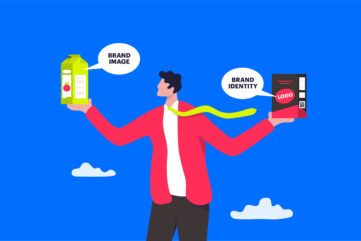What is visual identity? The complete visual identity definition

What is visual identity in branding? Is it the logo you design for your products and services, or the specific selection of images and animations you use?
What about your carefully-selected brand colors, your choice of fonts, or even the signs and wayfinding tools you use in your offline environments?
A visual identity isn’t just one thing, but a series of components combined to create a unique image for your brand. Used correctly, this valuable toolset makes your brand more recognizable, differentiates you from your competition, and helps you build an emotional connection with your audience.
The question is, how do you discover your visual identity?
A truly effective visual identity needs to do more than just make you “look good”. Every asset should play a part in sending a unified message about your organization. After all, visuals are powerful, capable of evoking emotion and meaning on a fundamental level.
Choosing a good brand image is pivotal to sending the right message.
Let’s get designing.
What is visual identity? Visual identity definition
Visual identity refers to all the graphical imagery and “visual” components of your brand image. Anything your customers can see and associate with your business can form part of your visual identity.
This includes your logo, packaging, website, and even your email templates.
There are dozens of visual assets connected to modern brands, and each play a part in your brand identity. While your logo helps to define what your company stands for and immediately grab audience attention, your typography conveys elements of your personality.
Visual identity is most commonly outlined in a set of brand guidelines, or a brand “style guide”. These are the rules used to deliver a consistent visual experience to your customers whenever you produce a new marketing asset or brand concept.
For instance, the Apple identity guidelines tell designers about everything from signature colors, to typography, header requirements, email signatures, merchandising, and more.
While there’s no one-size-fits-all for what a visual identity should look like, all of these assets should serve the same purposes:
- Create an emotional link with customers.
- Inform customers about the purpose of the brand.
- Highlight the services/ products offered.
- Convey the personality of the company.
- Unify the marketing and branding assets of the organization.
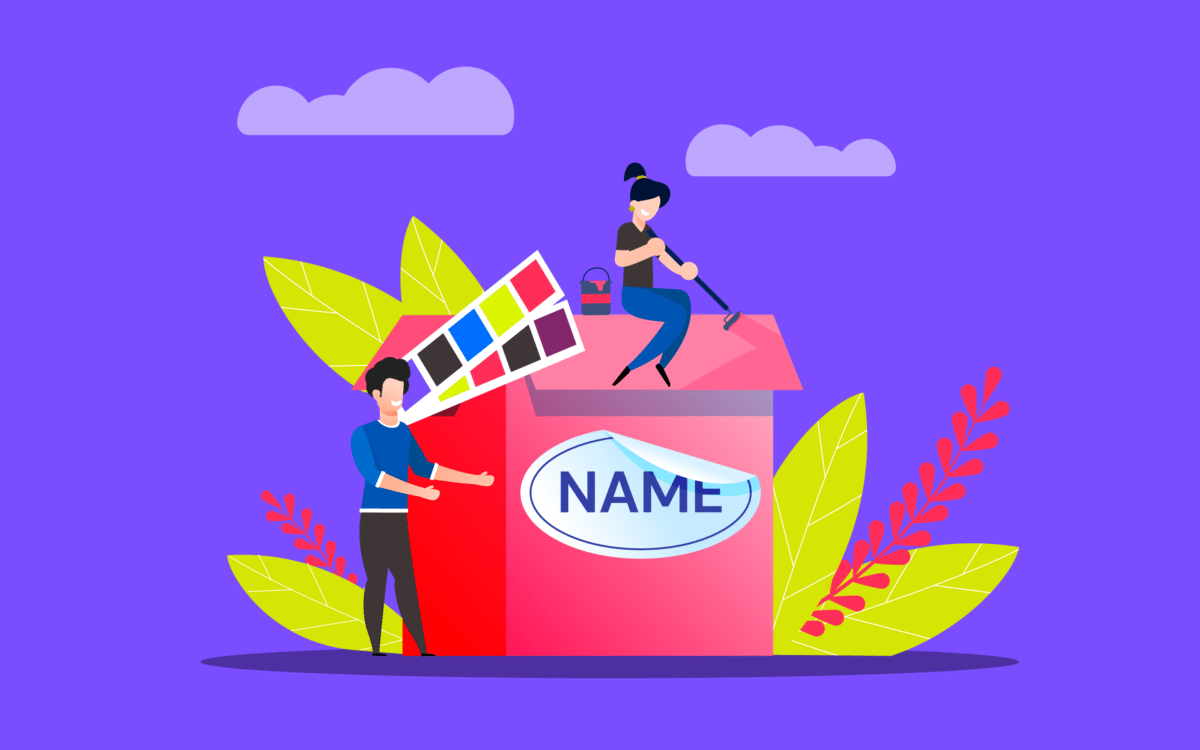
Visual identity vs branding
So, how does visual identity differ from basic branding, or brand identity?
Your visual identity will appear in your brand identity guidelines, but it’s not exactly the same thing. While branding and visual identity go hand-in-hand, one is an “umbrella” concept, and the other is somewhat more focused.
Branding, or brand identity, refers to the holistic expression of everything your company is. An important part of this concept is your image, the colors you use, your graphics, and so on.
However, there are other aspects in branding which aren’t highlighted by your image, such as your brand tone of voice, your copy-editing requirements, mission statement, core values, and even your sound bites.
While your visual branding identity refers to everything your customer can see and relate to you, your overall brand guidelines go beyond that singular sense to encompass absolutely everything.
Brand guidelines refer to how your company sounds, how it feels when you’re interacting with customers, and what kind of unique characteristics you demonstrate.
Brand guidelines and visual identity should be aligned. For instance, Innocent Drinks’ has a playful and engaging visual identity, defined by bright colors, hand-drawn designs and a funky font.
The underlying brand identity shares this fun and light-hearted nature, but it also draws attention to deeper elements of the Innocent Company’s purpose, such as using eco-friendly ingredients.
Think of it this way. Your visual identity shows everyone what your company is on the outside. Your brand identity demonstrates what your business is on the inside. To maintain an authentic presence, both concepts should be closely aligned.

Building a visual identity system: Your visual guidelines
To develop a strong visual identity definition of your own, you’ll need to consider all the components of your company’s image which need to be aligned. Notably, consistency is key with visual identity systems.
Making sure you know exactly what kind of identity you want to demonstrate in advance should stop you from confusing your audience with misaligned images.
Before you begin building your visual guidelines, ask yourself:
What are your brand values?
What matters most to your company, and how can you convey this through your image? For example, if you’re committed to creating a friendly experience, hand-drawn images may be more compelling than photographs.
How do you define your brand personality?
Are you playful and youthful, or mature and sophisticated? Your brand personality should seep into every aspect of your business image, no matter how small.
Who are your customers?
What kind of people do you want to reach with your visual identity? What kind of images are they attracted by, and how do your competition grab their attention?
With all of this information to guide you, you can begin working on the following elements:
1. Color palette
Probably the most obvious part of the visual identity system, your color palette is something you should be using in every brand decision and marketing strategy. Color in the branding world demonstrates emotion and feeling.
Blue is often associated with trust, while red highlights passion and power. The hues you choose should be specific to your brand.
Generally, your color palette will only include a handful of colors, so you can consistently create the same image or “aesthetic” everywhere you go. You can assign your colors to everything in your brand guidelines, from your logo to your website design, and even your social media marketing campaigns.
2. Typography
Your choice of type or font is crucial to your visual identity. Fonts play an important role in making an emotional impact on your audience. Some of the best visual identities start with a careful choice of font. Just look at the unforgettable Coca-Cola type for a great example.
When choosing your typography, remember to consider the basics of font psychology. Serif fonts are often seen as more professional and sophisticated, while sans-serif options are playful, modern, and youthful.
Don’t just examine fonts for your logo either. Remember to consider all the fonts you use on your website, headlines, emails, and even smartphone apps.
3. Graphics
Graphics refer to the host of digital visuals you might use to enhance your company’s identity. Look at Sendinblue’s marketing strategy for instance, with its series of playful animations and hand-drawn images, designed to inspire customers.
Graphics include all the simple aspects of your brand identity used to make your campaigns more visually compelling. These can include simple shapes, icons (like the ones you use on your website), full-scale illustrations, infographics, and even images for your blog posts.
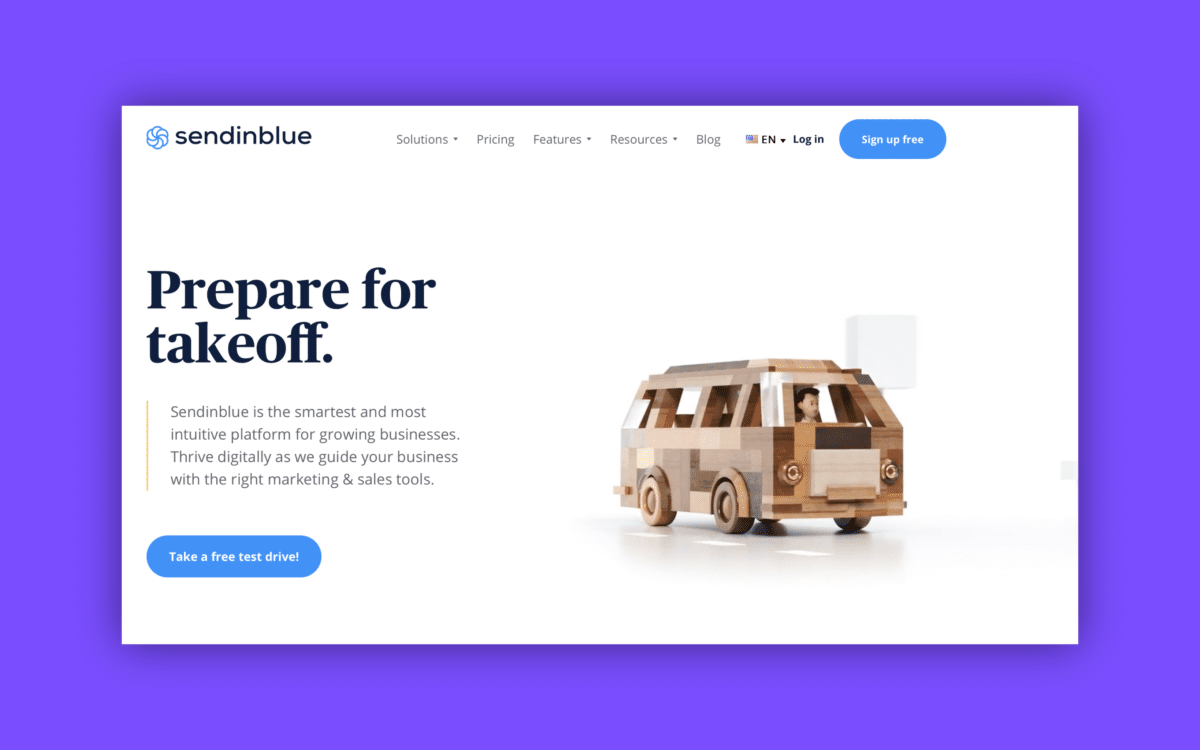
4. Imagery
Imagery in your visual identity is similar to graphics, but it goes beyond basic shapes and icons to look more specifically at “captured” content, like photos. Generally, your brand photography should be authentic, consistent, and unique to your company.
Avoid using any “stock” photos wherever you can, so you can maintain a unique image.
When creating your visual guidelines, highlight exactly what kind of identity you want to put across with your photos, videos, and similar images. You can even look at things like required lighting and background colors.
5. Physical assets
Physical assets in your visual guidelines refer to the “offline” products which convey your image or identity. Your physical assets often start with things like signage and design in offices and retail stores.
However, they can also include things like printed leaflets, banners, and advertising tools for events and conferences.
Your physical assets also include things like the layout and design of your store. Consider how Starbucks interiors all share the same warm and cosy design. It includes the uniforms employees wear and even the packaging of your products.
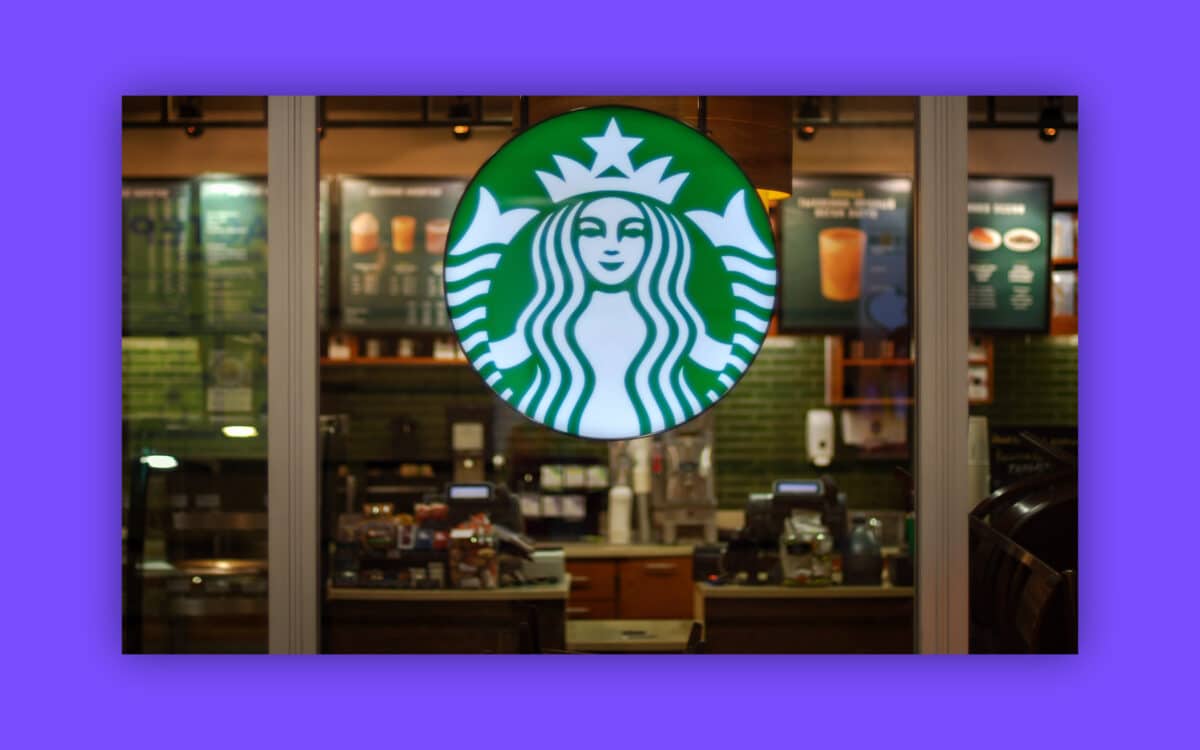
6. Logo
Another of the most obvious aspects of your visual identity, your logo is the first aesthetic tool your customer uses to identify you and your company. Logos are an extremely important part of branding because they define your entire personality and brand values into one simple image.
A good logo is at the heart of everything you do as a brand, and it can even help with things like choosing brand colors. Many of your future graphics, typography, and color choices will be designed to match your logo in the future.
Ensure your logo can work well across a range of assets, from your business cards to your email marketing.
7. Your website and online presence
A website is a culmination of visual assets. It showcases engaging brand colors and images, highlights your personality through typography, and shows off your logo too.
Your website is one of the most important visual branding tools you’ll have in today’s digital world, and it should also act as a jumping off point for other aspects of your online presence.
The image and identity you convey on your website needs to appear in everything else you do online, from your social media posts to your guest blogging sections, PR articles, eBooks, webinars, and even your email marketing templates.
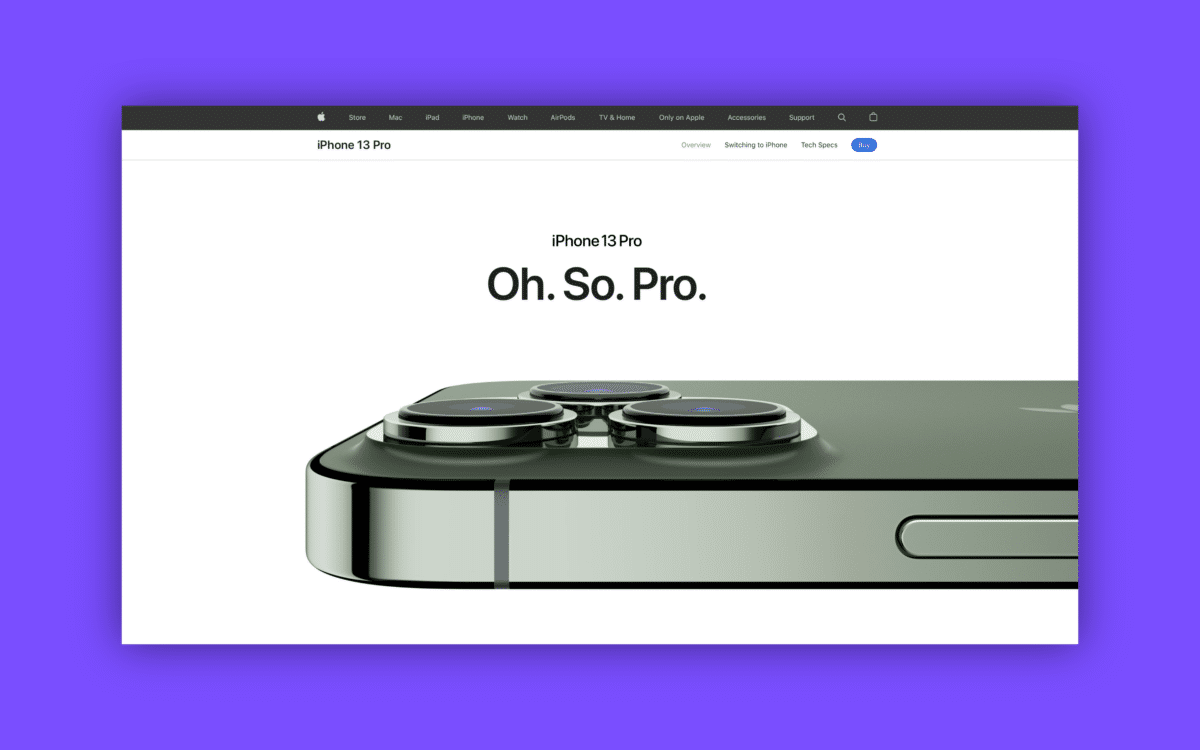
8. Advertising assets
Visual identity systems also direct your advertising efforts. When you’re marketing online or offline, your aim isn’t just to make people aware of what you’re selling; it’s also to create a sense of familiarity with your brand.
Your advertising assets should create a consistent personality and image which helps to form relationships between you and your customers.
Your visual identity needs to guide every promotional asset you design for your company. Whether you’re creating promo videos, or designing infographics to share on social media, your customers should be able to instantly recognize your brand essence.

How to design a visual identity
There are plenty of visual identity examples out there capable of showcasing just how important the right image can be. Think about how you feel when you see the bright red of the Coca-Cola brand or interact with the fun and playful colors, and shapes embraced by McDonalds.
A good visual identity makes your company look great, but it also plays a crucial role in developing emotional connections with your target audience. Without a strong visual identity, you’d struggle to develop brand loyalty.
So, where do you get started?
Step 1: Define your brand identity
First, decide what you want your company to be. Your brand values, vision and mission should guide your visual decisions.
For instance, Harley Davidson wants to convey a rugged, outdoor, and powerful appearance. The use of shapes like shields in the company logo, combined with bright, exciting colors like orange are excellent for this purpose.
Harley’s commitment to freedom and individuality also allows different retailers across the world to create their own versions of the logo to share with followers. This helps to highlight the nature of the brand, without making the visual identity too confusing.
To understand and design for your own brand identity, ask yourself what your core values are, what your purpose is as a company (besides making money), and how you communicate with clients.
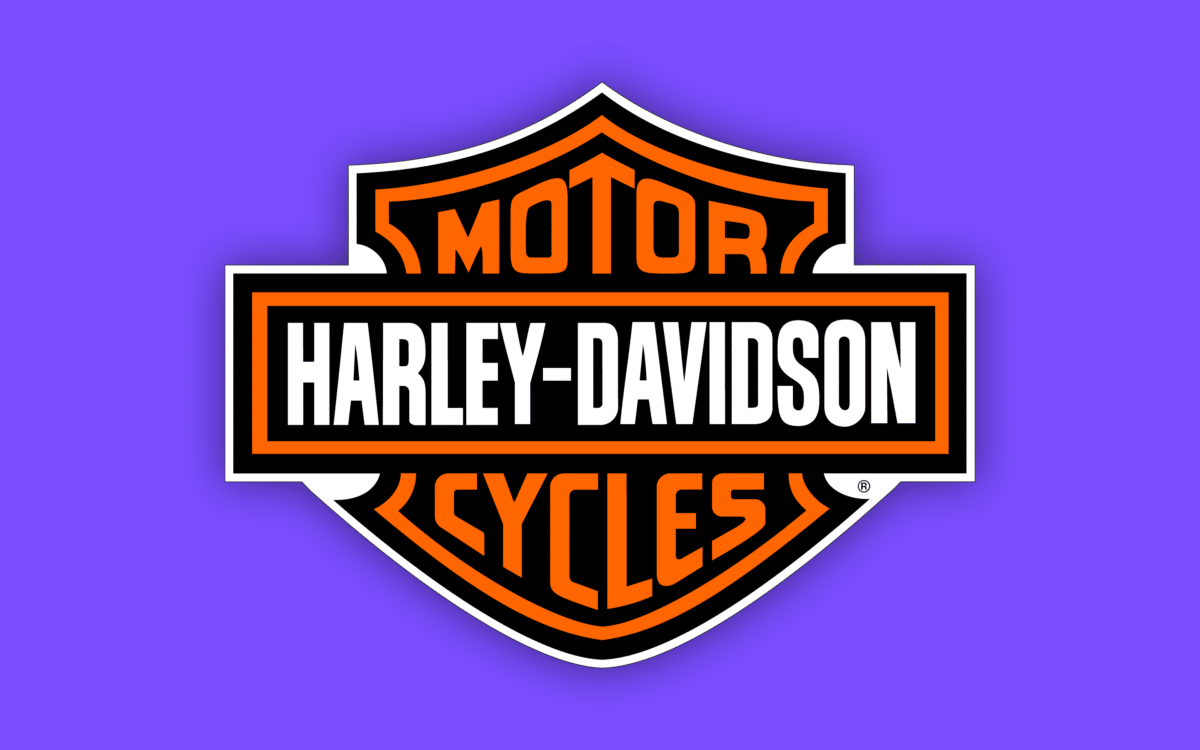
Step 2: Embrace your creative side
If you’re not particularly comfortable with choosing designs and color palettes yourself, working with a professional design team should help you to get your image on track. However, it helps to understand the basic elements of design to begin with.
Research things like logos and color palettes in your industry and find out what your competitors are doing to connect with your customers. Ask yourself how you feel when you see certain shapes and colors presented together, and what this might mean for your visual identity.
For instance, the Casper brand knew customers tend to feel more comfortable with the color blue than any other shade, so it focused its entire identity around the calming color.

Step 3: Go beyond the visuals
Your visual identity is all about making your company look good to your intended audience, but there’s something a little deeper to the concept than this too. You should be telling a captivating story about your brand too, and what it’s accomplishing in a specific industry.
If you’re not sure how to start telling your story, do a little research with your team. Ask them how they feel when they see certain shapes and colors positioned together. Question what your employees think of, visually, when they imagine your brand.
Chobani wants to convey a sense of nature and eco-friendliness with its products, so we see a lot of natural colors and textures in the visual brand identity. This, combined with a creative, playful set of fonts highlights the company as an innovator, and forward-thinking brand.
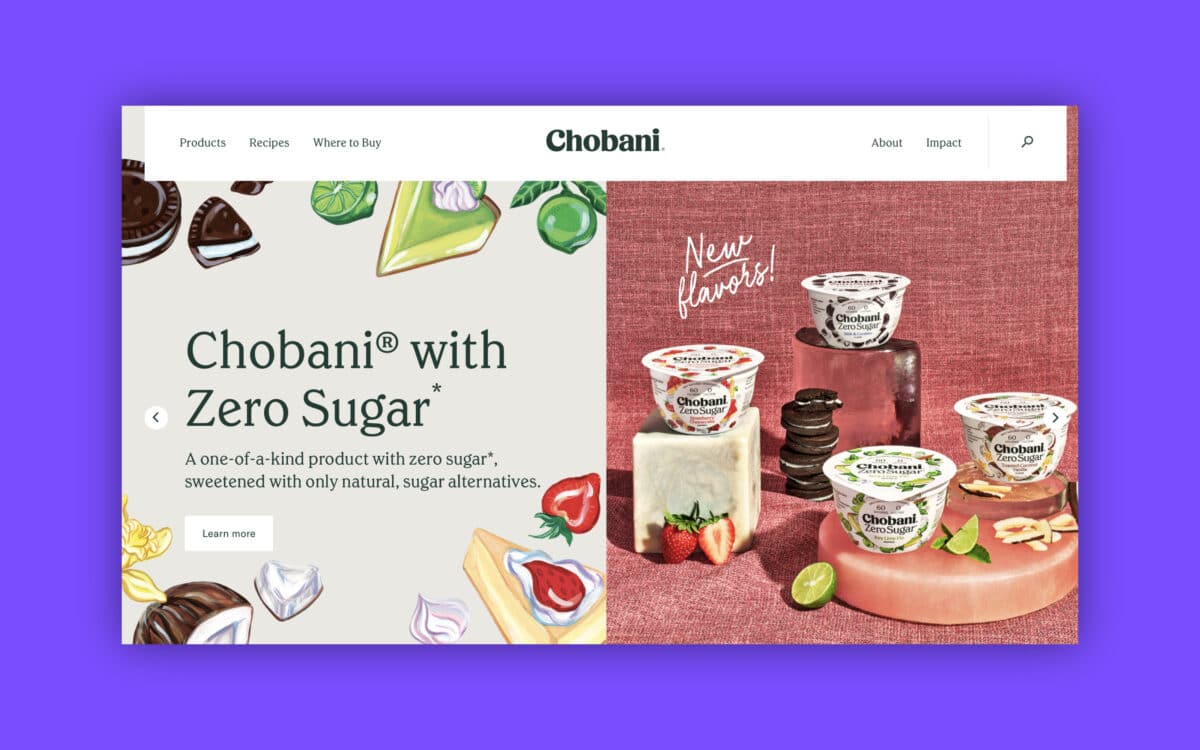
Step 4: Keep it simple
When you begin to discover the inherent meaning behind images and visual assets, it’s easy to get carried away. There’s often a lot of depth hidden behind each brand, and a lot of “purpose” companies want to convey to differentiate themselves from the competition.
However, if you try to showcase too many ideas at once with your visual identity, you’re going to end up overwhelming and confusing your audience. You have limited time to make a lasting impression on your target audience, so try to focus on the specific concepts you want to share.
The Winc Wine Club combines modernity through bright colors and stunning photography, with sophistication, via serif fonts and professional visuals. The two concepts come together beautifully because the visual identity of the brand is so simple.
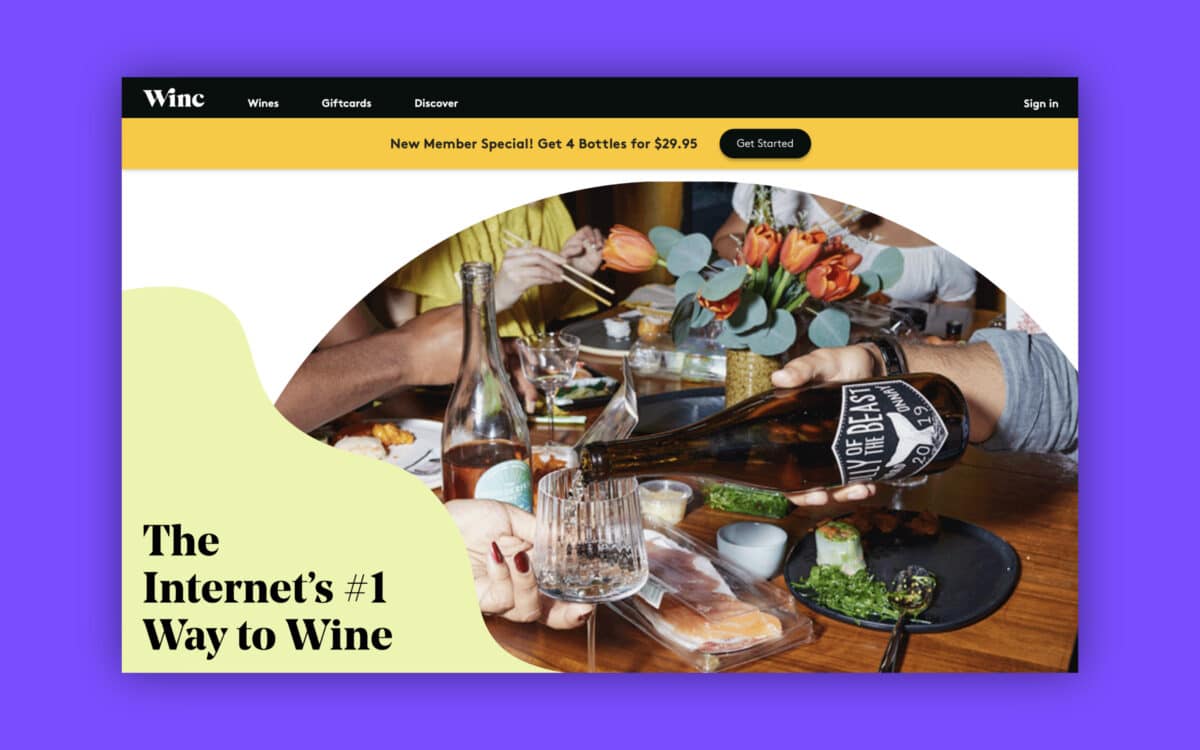
Step 5: Be unique, but not confusing
One of the biggest benefits of a good visual identity in branding, is it helps to differentiate your brand. As people get to know your company, they’ll learn more about what makes it special, from the unique pricing structure of your products to your commitment to excellent customer service.
However, no matter how hard they try, people still struggle to avoid judging a book by its cover. In a saturated marketplace, your customers will still use your visual identity as the first step in deciding whether to work with your company, or the competition.
With your visual identity, you need to ensure you’re standing out from the competition, so you don’t blend in with dozens of different brands. However, it’s important to still give your customers certain aspects of what they might expect.
Going completely against the status quo might grab attention from some customers, but it may also convince certain buyers you’re not the company they’re looking for. Know when to follow expectations, and when to step apart from them.
Step 6: Adapt to multiple mediums
Several decades ago, designing a brand visual identity was simple enough. You really only needed to think about a handful of things, like the logo you’d place on your bags and receipts, and the design of your physical store.
Now companies have many ways to interact with customers, they need to think carefully about their visuals in different environments.
On their website, Dell ensures customers can easily search through content with simple icons, so finding products is simple, even on a smartphone.
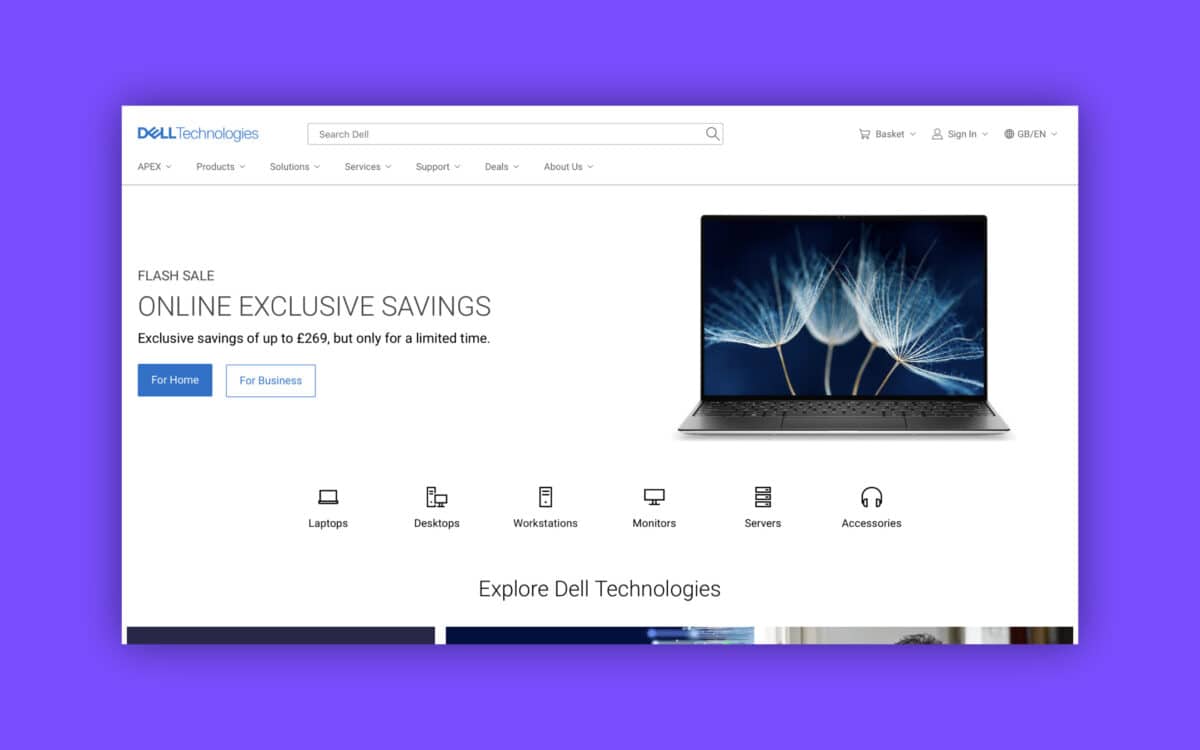
The visuals of the site match the internal images in Dell stores, as well as the unique visual identity they try to convey on social media channels. However, everything is carefully structured to suit the platform it appears on.
Dell might share video snippets and clips on Instagram, to take advantage of the “Reels” service, and it also converts those videos into simple pictures for Pinterest. Working with a designer will help to ensure you’re designing each part of your visual identity to suit your required medium.
A professional will also be able to provide advice on how your visual choices affect things like user-friendliness and convenience. Serif fonts, for example, are more legible in print, but sans serif fonts can be easier to read on a screen.
Step 7: Maintain consistency
Finally, as your company evolves, you may decide to upgrade or enhance your visual identity from time to time. This can be a necessary part of continuously appealing to your target audience and remaining competitive in your chosen niche.
While it’s fine to update your identity from time to time, you should also be maintaining consistency as often as you can. Once you’ve chosen a brand identity from a visual perspective, make sure you use it wherever your brand interacts with customers.
You should be showcasing the same essential components of your visual identity on every platform, through every consumer conversation. This will help to build a sense of familiarity which helps clients to recognize your brand in the future.
Visualize a brighter future with visual identity
Ultimately, your visual identity is just one component of your entire brand. However, in today’s cluttered marketplace, it’s also one of the most important ways to ensure you can capture audience attention.
Visual identity is a powerful tool for telling your brand’s story and making sure you connect with customers on emotional level.
Choose your visual identity correctly, and you’ll be more likely to connect with your client wherever you are, while making a memorable image for your company.
Your visual identity will help you to stand out from the crowd, as well as convey important messages you couldn’t effectively highlight through the use of text alone.
If you need help developing your own visual identity, reach out to the team at Fabrik Brands today, and check out some of our other useful guides.
Fabrik: A branding agency for our times.

We’ve built our reputation, building brands for other people.
Do you need to bring a new brand to life or breathe new life into an existing one? If so, let’s start a conversation





